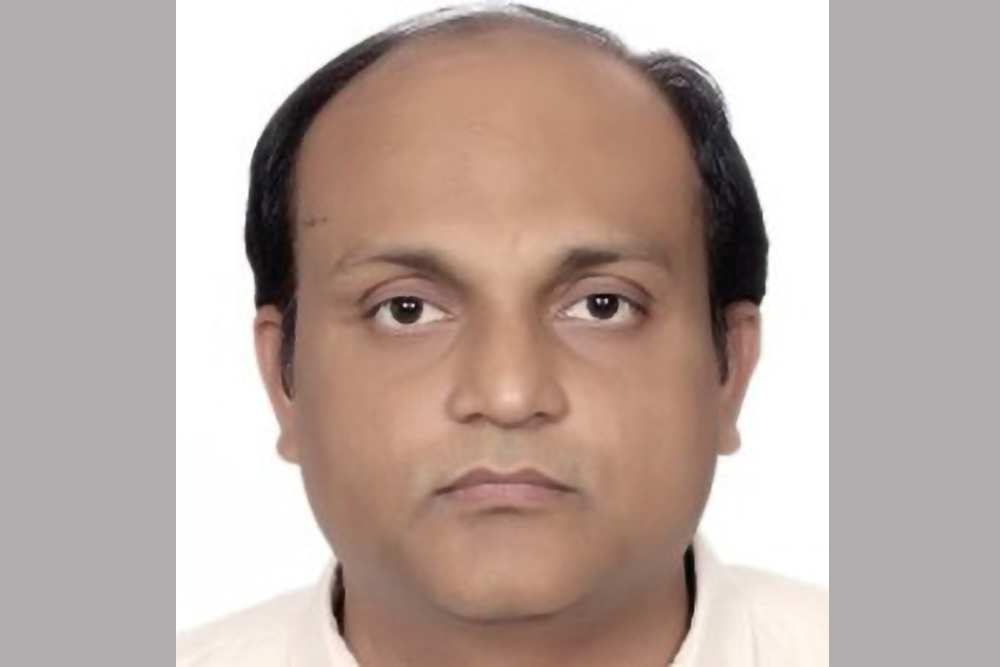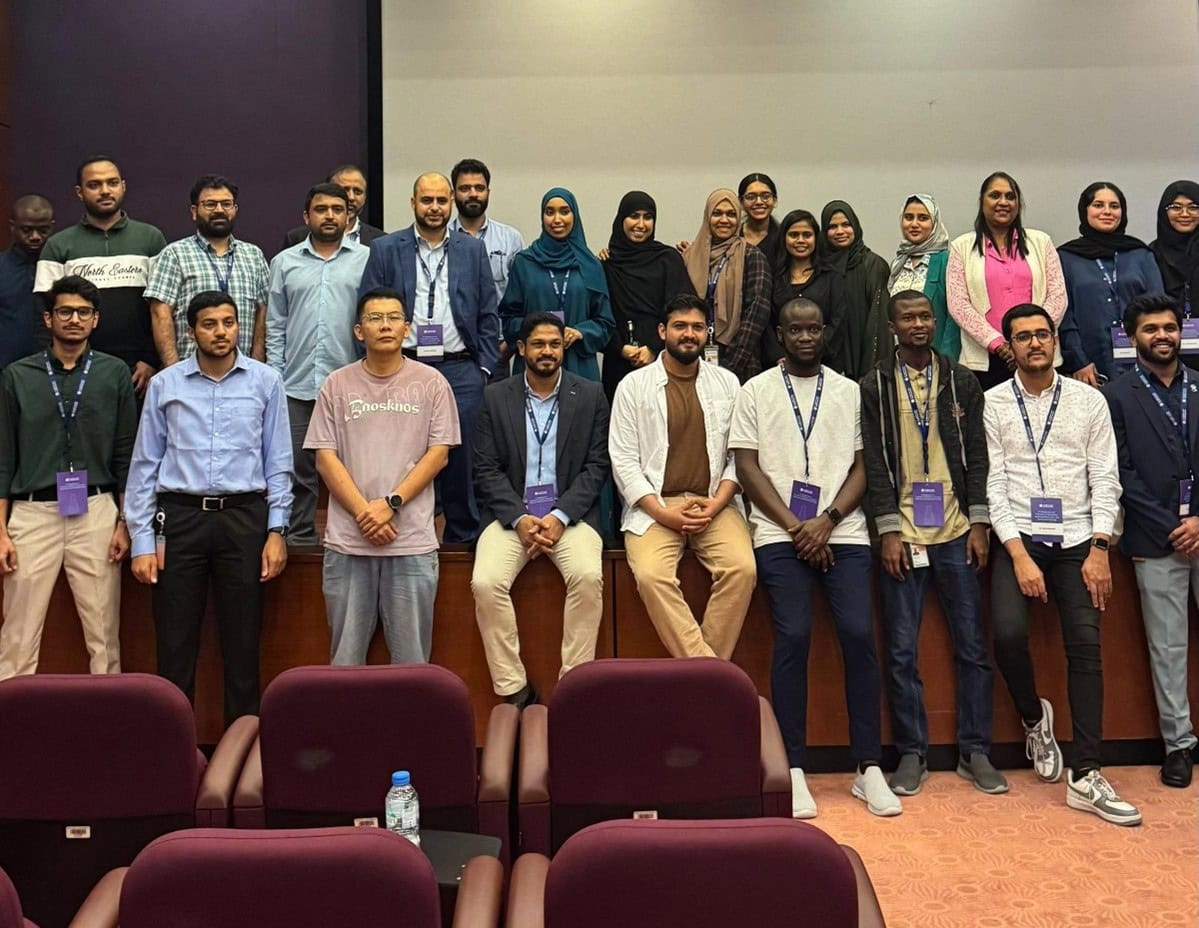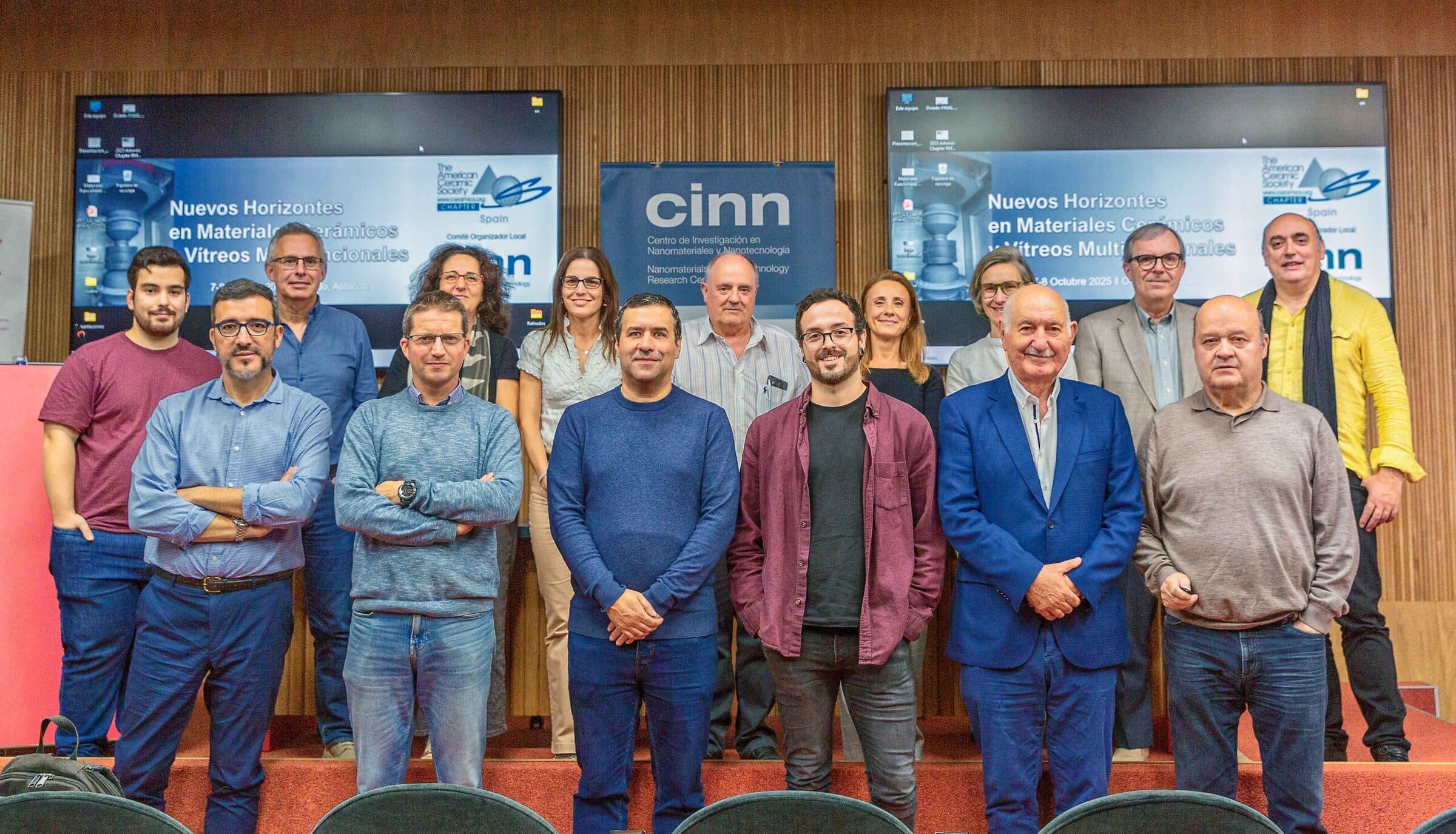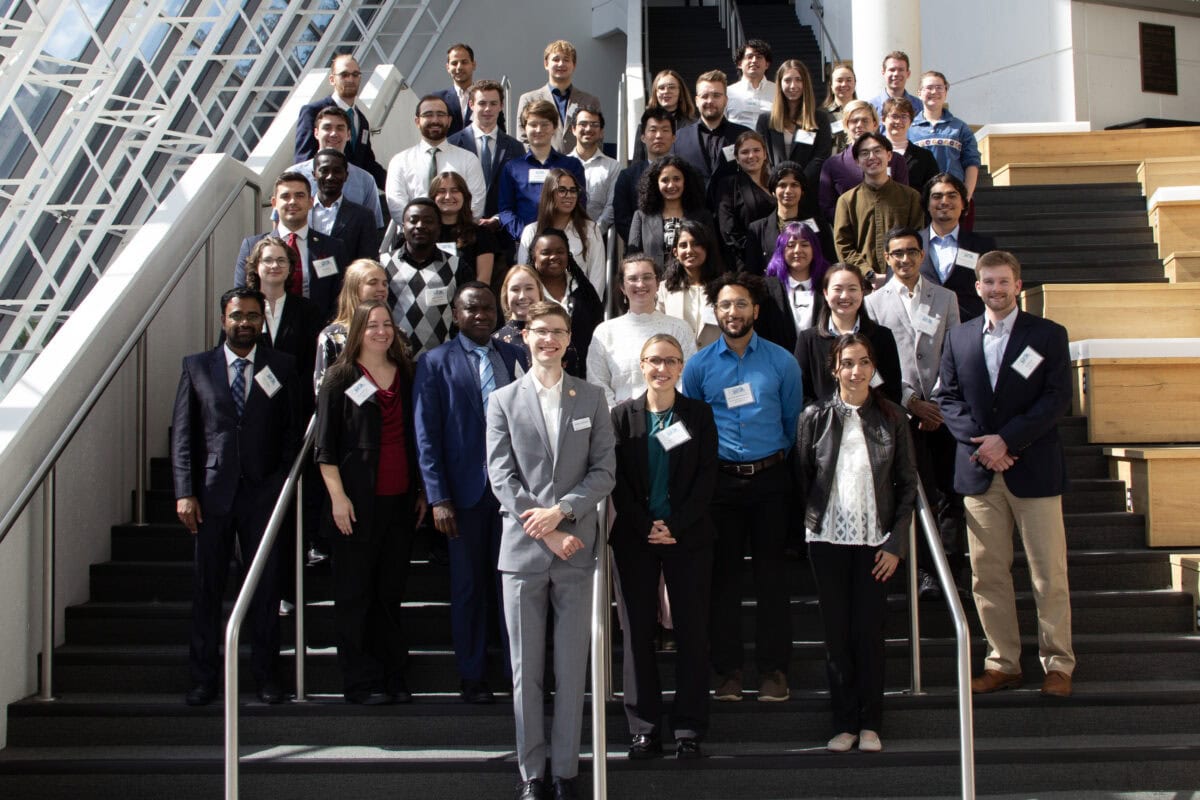
[Image above] ACerS President’s Council of Student Advisors held their annual business meeting on the Friday and Saturday before ACerS Annual Meeting at MS&T25. This year’s delegates consist of 46 students from 29 universities, representing seven countries. Credit: ACerS
The year 2025 has been filled with many conversations about the state of science research and funding in the U.S. and globally. But during ACerS 127th Annual Meeting at the Materials Science & Technology technical meeting and exhibition, which took place Sept. 28–Oct. 1, 2025, in Columbus, Ohio, attendees focused on the positives and discussed ways to support opportunities for growth in the coming years.
MS&T is an annual event cohosted by The American Ceramic Society; The Minerals, Metals & Materials Society (TMS); and the Association for Iron & Steel Technology (AIST). This year, more than 2,200 attendees from 34 countries attended the conference and exhibit, including nearly 680 students.
“All the presentations and discussions at this year’s MS&T demonstrated the dedication of our members to supporting the strong growth of the global ceramics and glass community,” says Mark Mecklenborg, ACerS executive director. “We look forward to continuing this commitment as we move back to Pittsburgh in 2026.”
Below are highlights from ACerS 127th Annual Meeting at MS&T25.
Nurturing opportunities for growth at ACerS
The American Ceramic Society made noticeable strides toward accomplishing the goals laid out in the 2025–2028 strategic plan, as reported by outgoing ACerS president Monica Ferraris during the Annual Business Meeting on Monday, Sept. 29.
Regarding the goal to enhance technical content, education, and professional development, ACerS announced in August 2025 that it received a two-year extension of funding from the Department of Defense for its “Professional Development for Hypersonic Materials” program, coordinated in collaboration with the United States Advanced Ceramics Association. The Society also finalized the details of its continued partnership with Wiley through 2033, which included assuming sole ownership of International Journal of Applied Glass Science.
ACerS also established several task forces to develop and revise various programs and initiatives to align with the evolving needs of industry, government labs, and international members. The impact of artificial intelligence on scientific research and scholarly publications is a topic of particular interest.
As the Society heads into its second year of the strategic plan, incoming ACerS president Mario Affatigato said his priorities in office will be guided by three “Fs”: finances, fulfillment, and the future.
“I’m sure there will be some new challenges and new things we must tackle, but there are still so many opportunities for growth, for optimism,” he said during an interview about his plans.
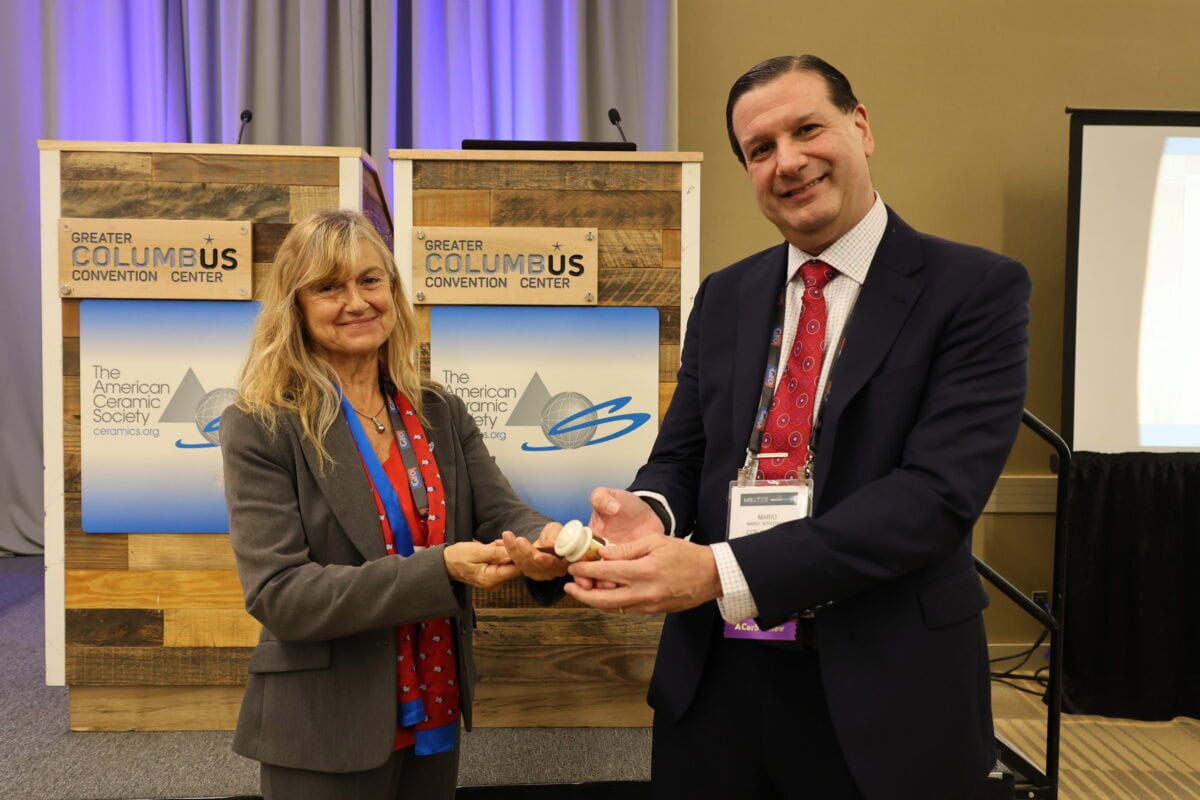
Outgoing ACerS president Monica Ferraris, left, passes the ceremonial ceramic gavel to incoming ACerS president Mario Affatigato during the Annual Board Meeting. Credit: ACerS
Award lectures highlight technologies for a healthier future
Industrialization brought many benefits to society but also new challenges, such as emissions-driven climate changes and a rise in noncommunicable diseases due to increased longevity and more sedentary lifestyles. The award talks at this year’s Annual Meeting profiled some of the technologies that can allow for healthier living with fewer environmental impacts.
The award talks started on Monday morning with the Navrotsky Award for Experimental Thermodynamics of Solids, given by Arizona State University postdoctoral researcher Konrad Burkmann. He talked about the possibility of using complex metal hydrides for chemical hydrogen storage, and he emphasized the importance of using calculations along with experiments to determine the potential of each option.
A session sponsored by the Bioceramics Division took place afterward and included three lectures by Bioceramics awardees:
- Antonia Ressler of Tampere University delivered the Global Young Bioceramicist Award. She talked about developing personalized and affordable multisubstituted calcium phosphate-based scaffolds for bone augmentation applications.
- Sayoni Sarkar of ETH Zürich delivered the Bioceramics Young Scholar Award. She shared her research on the development of oxide bioceramics for use in multifunctional sunscreens.
- Aldo Boccaccini of the University of Erlangen-Nuremberg delivered the Larry L. Hench Lifetime Achievement Award. In his recorded presentation, he overviewed current and future applications of bioactive glass, a timely choice considering this year marks 40 years since the first bioactive glass-based medical product received FDA approval.
On Tuesday morning, Tatsuki Ohji, visiting professor at Yokohama National University and Nagoya Institute of Technology and emeritus research councilor at the National Institute of Advanced Industrial Science and Technology, delivered the Edward Orton Jr. Memorial Lecture on “Ceramics for structural applications: Overcoming the challenges of this formidable material.” He concluded his talk with a beautiful tribute to Edwin Rudolph Fuller Jr., ACerS Fellow, Distinguished Life Member, and past president, who died in August 2025. Ohji made the analogy that both the strongest humans and materials have a softness to them, which allows them to adapt and function under stressful environments.
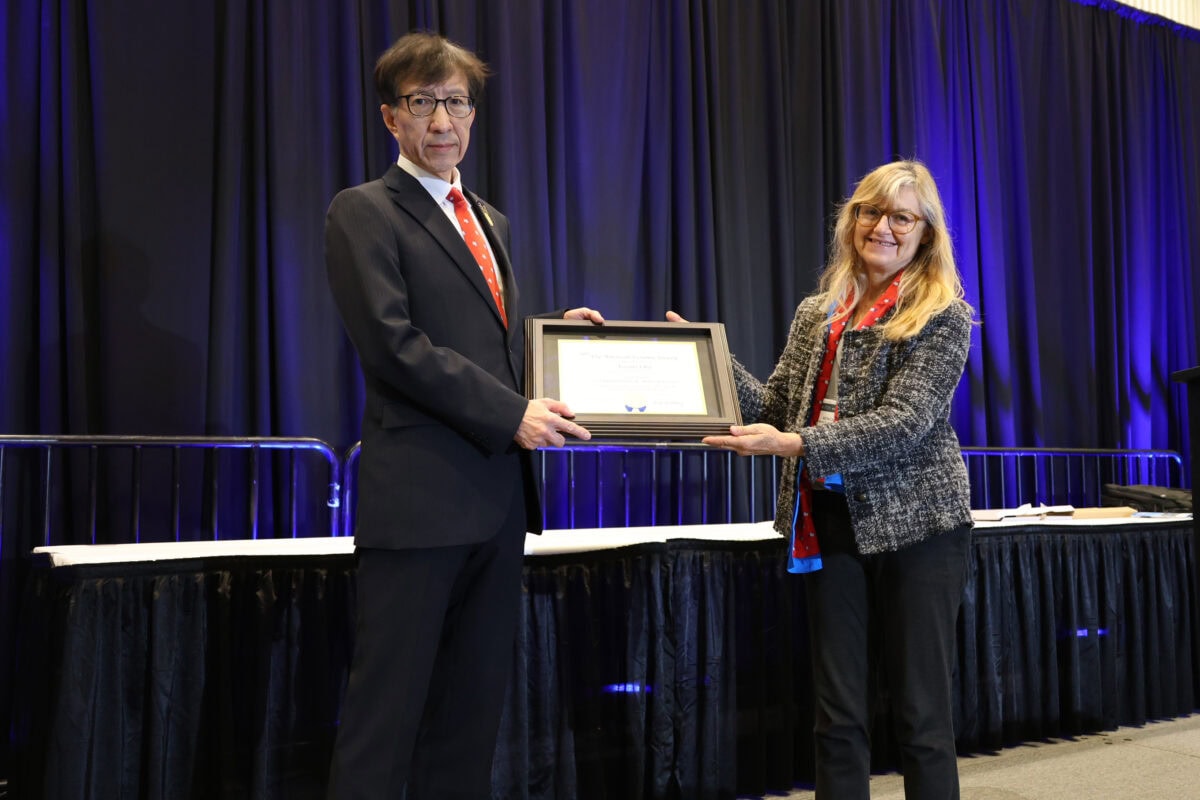
Tatsuki Ohji, left, accepts the Edward Orton Jr. Memorial Lecture certificate from outgoing ACerS president Monica Ferraris. Credit: ACerS
Later Tuesday morning, Morten Mattrup Smedskjaer of Aalborg University delivered the Cooper Session Distinguished Lecture on the deformation behavior of oxide glasses. He included a section on metal–organic frameworks as well, which coincidentally was the topic of this year’s Nobel Prize in Chemistry. He was followed by this year’s Cooper Scholar recipient, student Wuqian Zhang of Swarthmore College, who discussed the thermodynamic properties of the platinum–copper–phosphorus bulk metallic glass system.
On Tuesday afternoon, Ungyu Paik, distinguished professor in the Department of Energy Engineering at Hanyang University, Korea, delivered the Rustum Roy Lecture on the materials and processing methods used to fabricate high-energy-density lithium batteries. He concluded by encouraging attendees to check out more articles on this topic in the gold open-access journal EES Batteries, for which he serves as editor-in-chief.
The last award lecture took place on Wednesday afternoon. Sossina Haile of Northwestern University delivered the Robert B. Sosman Lecture on the surface chemistry of ceria, an important catalyst material.
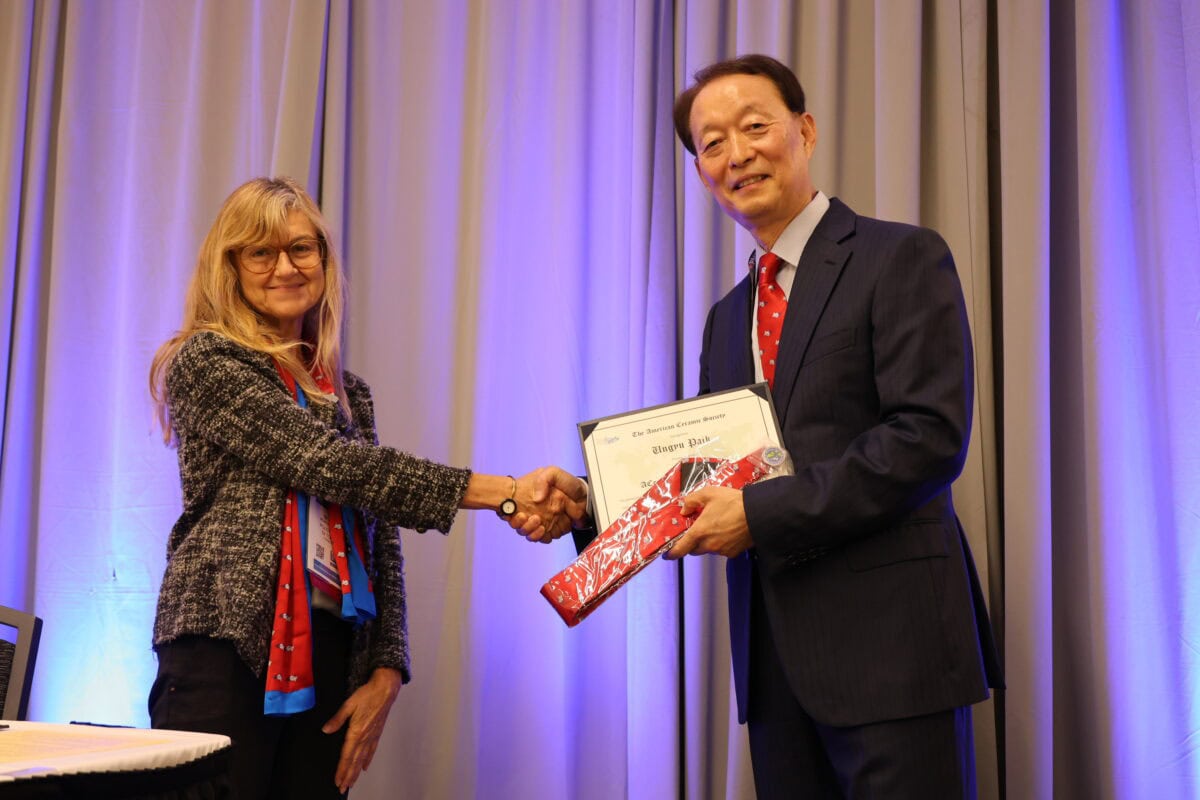
After his talk on Tuesday, Ungyu Paik, right, was recognized as an ACerS Global Ambassador by outgoing ACerS president Monica Ferraris. Credit: ACerS
Emerging professionals grow as leaders through targeted competitions and events
Scientific conferences are a great opportunity for students and young professionals to grow their networks and knowledge. ACerS Annual Meeting always features several targeted events for this audience to help them grow as leaders within the materials science community.
On Sunday, students competed in the annual Undergraduate Student Speaking Contest, which provides students the opportunity to practice communicating their research to a broader audience. This year, Pavan Kumar Reddy Pothula of The Pennsylvania State University took home first place, Robert David Hiroshi Race of the University of Michigan placed second, Emma Eleson of The Pennsylvania State University placed third, and Casen Legreid of Iowa State University placed fourth.
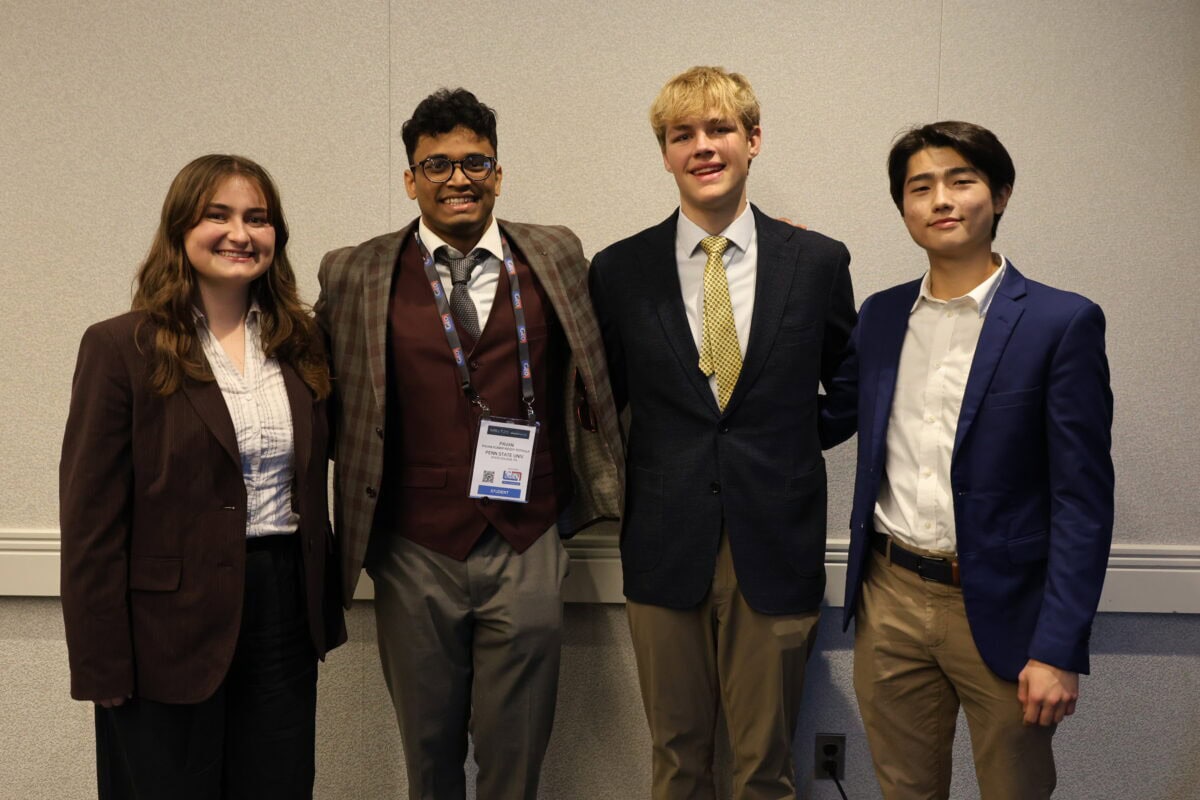
Finalists of the Undergraduate Student Speaking Contest. From left: Emma Eleson, Pavan Kumar Reddy Pothula, Casen Legreid, and Robert David Hiroshi Race. Credit: ACerS
On Monday, the Ceramic and Glass Industry Foundation hosted the IGNITE MSE symposium and luncheon. This program, which runs in conjunction with selected conferences affiliated with The American Ceramic Society, provides an opportunity for undergraduate and graduate students to explore professional development and career opportunities. It also includes the opportunity to submit a poster on the broader impacts of scientific research to the larger poster session on Tuesday.
The winners from this year’s poster session include
Undergraduate posters
- Emma Eleson, The Pennsylvania State University
- David Gaetano, Yale University
- Ryan McGinnis, Colorado School of Mines
Graduate posters
- Yolmarie Del Valle Gonzalez, Argonne National Laboratory
- Carter Fietek, The Ohio State University
- Preston Guynup, Alfred University
This year, the IGNITE MSE luncheon was co-organized with the ACerS Mentor Programs, which are designed to equip participants with the insight, tools, and connections necessary to make a lasting impact in their future career. People who want to be involved in the programs next year can apply on the ACerS website.
The famous mug drop and disc golf competitions took place on Tuesday. These annual events, hosted by Keramos, challenge students to fabricate ceramics that can withstand heavy impacts, and each year conference attendees flock to witness the students’ successes and failures.
This year, Dimitri Shultz from West Virginia University took home first place in the mug drop competition. Additionally, Dongyang Li from Wuhan University of Technology was announced as having the most aesthetic mug.
In the disc golf competition, Renard “Montie” Jenkins from Virginia Tech took home first place for longest successful throw. Meanwhile, Elena Granzeier from the University of Illinois Urbana-Champaign was announced as having the most aesthetic disc.
Events for emerging professionals wrapped up on Wednesday morning with a Young Professionals Network breakfast event. ACerS Corporate Partners were invited to attend to foster networking and discussions.
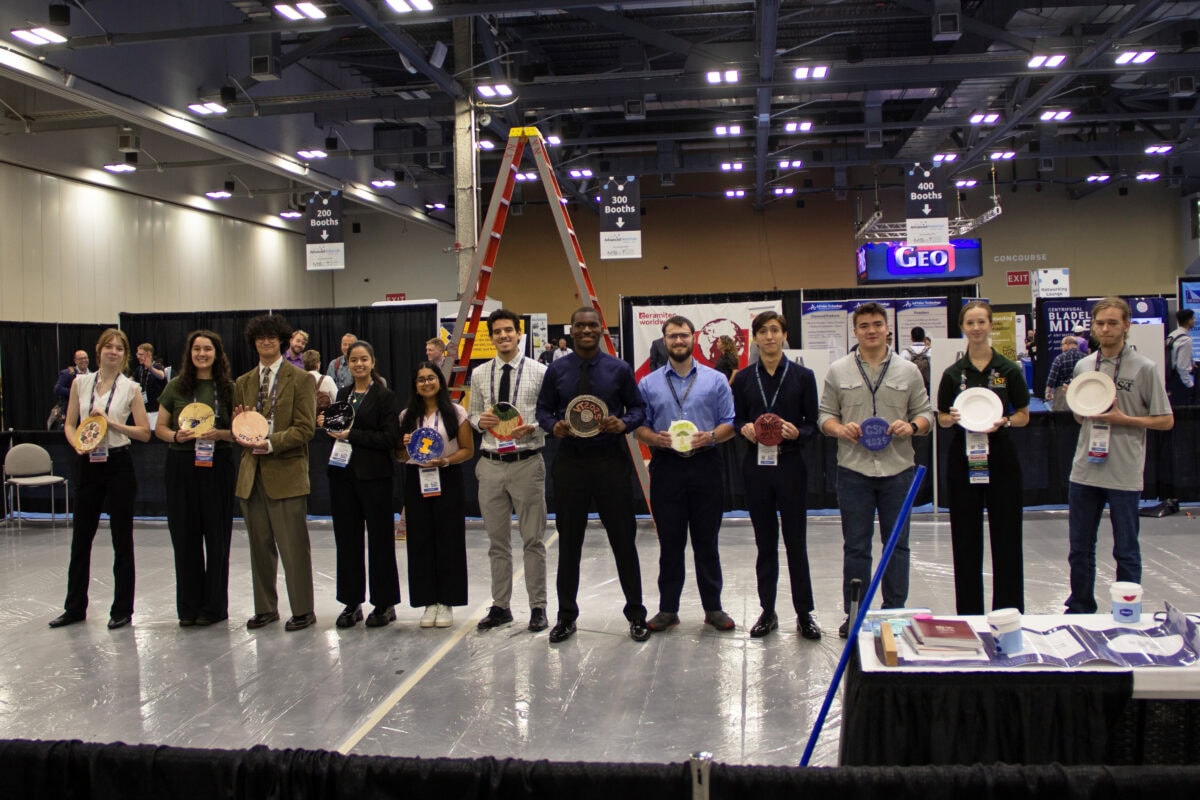
All the competitors in this year’s disc golf competition with their discs. Credit: ACerS
Visit the ACerS Flickr page for more photos from ACerS Annual Meeting at MS&T25. Pictures from the Awards Banquet can be found there as well. Next year, ACerS 128th Annual Meeting at MS&T26 will take place in Pittsburgh, Pa., from October 4–7. We look forward to seeing you then!
Author
Lisa McDonald
Spotlight Categories
- Meeting Highlights
